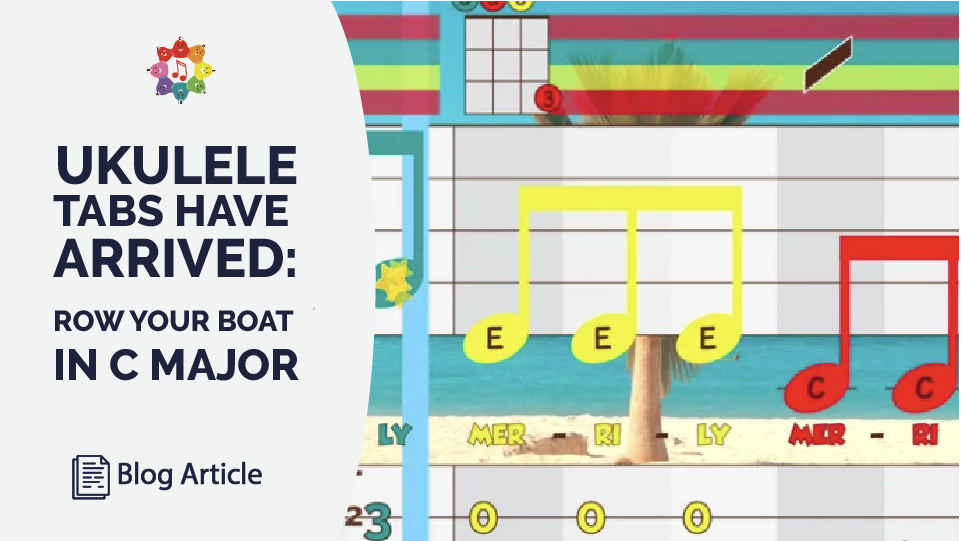First Ever Prodigies Tab
This week, we’re thrilled to introduce the first ever Prodigies tab.
In this version of Row Your Boat, we’re focused on playing the melody in the first position (meaning the open strings and the first 3 frets).
There’s A LOT going on in this video, but you’ll mainly want to focus on the TABS staff in the bottom right part of the screen.
Alternatively, you can focus on the sheet music itself, or on the animated Ukulele neck. Ideally, with some practice, you’ll start to see how all three work together.
What are tabs?
Tabs (or tablature) for those who don’t know, is a way of notating music for guitar, bass & ukulele that focuses more on the fret numbers and specific strings than standard notation.
It’s common in guitar lead books and has been popularized by websites like Ultimate-Guitar.
Tabs are particularly good for guitarists because they remove the need to translate sheet music on the treble clef to the notes on the fretboard.
And even for folks who can do that, it helps to communicate exactly which position the arranger recommends for playing the song. That is especially helpful because on the guitar (as opposed to say piano), because the guitar has multiple versions of many of its notes.
This generally means guitarists need to sit with the music and experiment with multiple positions before finding the best one, though tablature simplifies that right out of the gate.
The downside of tabs though is that tabs don’t contain much rhythmic information (or really any at all). That means that you need to essentially need to figure out the rhythms by ear or on your own.
And on top of that, you can get really good at reading guitar tabs without ever learning anything about music theory or the notes on your fretboard, which isn’t ideal.
Prodigies Tabs
To help remedy both those problems, we’ll be releasing our tabs in conjunction with the melody in the treble clef. That way you’ll have the rhythm AND the notes there, so you’re not just blindly reading frets on the strings.
We’ll also be using light gray boxes to mark the different beats within each measure, which will help provide some rhythmic context to the tablature.
Hopefully this will combine the best elements of tablature with traditional sheet music, while also being color coded to reinforce the work we do with bells, Boomwhackers and Chromanotes stickers.

